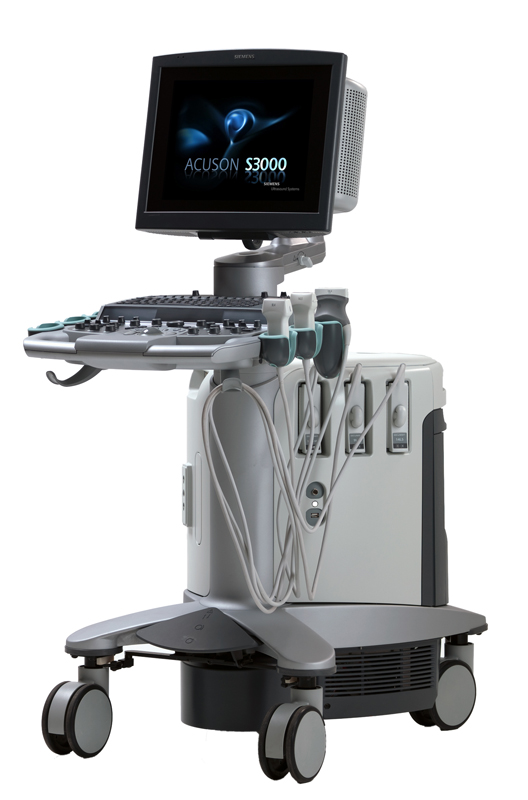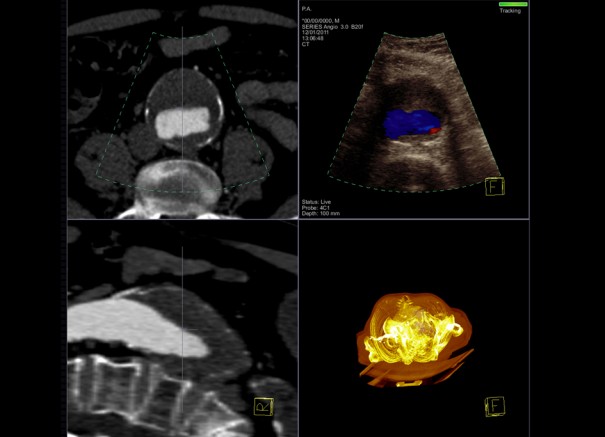The Siemens Acuson S3000 manages to merge 3D images in a single click
The company Siemens has created the Acuson S3000 device with which computed tomography or magnetic resonance imaging is fused, with ultrasounds using the scanner map as a pattern to know where the lesion is and thus make the puncture through echo.
 The main objective of advances in diagnostic imaging is to obtain a higher image quality to be able to diagnose with increasing accuracy. In this sense, the numerous benefits of CT imaging fusion (TC) o Magnetic Resonance Imaging (RM) with ultrasound indicate that the future of medical imaging goes through the consolidation of this technique. This has been shown at the XXXI Congress of the Spanish Society of Medical Radiology (SERAM), held in Granada.
The main objective of advances in diagnostic imaging is to obtain a higher image quality to be able to diagnose with increasing accuracy. In this sense, the numerous benefits of CT imaging fusion (TC) o Magnetic Resonance Imaging (RM) with ultrasound indicate that the future of medical imaging goes through the consolidation of this technique. This has been shown at the XXXI Congress of the Spanish Society of Medical Radiology (SERAM), held in Granada.
Often, with a primary technique such as CT or MRI, it is difficult to diagnose an injury or pathology accurately. However, by adding images of different techniques, a higher quality image is obtained and, therefore, a much more reliable diagnosis. In addition to facilitating a more accurate decision about the injury or pathology, image fusion, has significant advantages in terms of security, comfort and cost savings when performing a biopsy. When CT images are fused with ultrasound, the scanner map is used as a pattern to know where the lesion is and thus make the puncture through echo. In this way, avoid exposing the patient again to radiation and reduce waiting lists and high costs of tests such as CT or MAGNETIC Resonance Imaging.
nevertheless, current fusion techniques require manual recording of CT or MRI images, a process that is slow. The patient is also required to lie down and immobile throughout the scan to avoid manual realignments.. To overcome these limitations, Siemens Healthcare has launched its latest platform for ultrasound, the Acuson S3000. This new ultrasound system represents an important advance for this field, in which Siemens is a pioneer with its patented eSie Fusion technology. This system allows automatic fusion of computerized tomographic images (TC) in 3D with real-time ultrasound with a single click. In this way, the registration of the CT image is reduced to a few seconds and the manual registration techniques are significantly simplified, thus optimizing the workflow during the volume registration in the MRI.
Dr. Dirk-André Clevert, adjunct professor and section head of the Interdisciplinary Ultrasound Centre at grosshadern University Hospital Munich (Germany), and one of the first doctors to test the eSie Fusion system, "The application of the new eSie Fusion imaging technology allows us to significantly accelerate our workflow.. previously, the success of interventions was controlled by CT follow-up. nevertheless, before the new ultrasound fusion solution, it would be possible to reduce the number of follow-ups that must be done with CT. The use of fusion allows us to improve clinical information without increasing radiation. This is a great advantage, for both the patient and the healthcare professional".
First equipment to integrate MRI and PET
Siemens has successfully developed the Biograph mMR, first Magnetic Resonance System (RM) Fully integrated whole-body molecular with simultaneous data acquisition technology. This revolutionary system consists of a scanner 3 Teslas and an integrated positron emission tomography detection system (PET), with a structure with which they work as a single team. The new Biograph mMR machine manages for the first time to capture simultaneously MRI and PET data.
This technology is designed to bring new opportunities for imaging techniques. While MRI provides precise morphological and functional details of human tissue, PET goes further and studies the human body at the level of cellular activity and metabolism. This innovative system has the potential to be especially useful in identifying neurological conditions., oncological and cardiac disease and facilitate planning of appropriate treatments. Biograph mMR also creates new opportunities for research, such as the development of new biomarkers or new therapeutic strategies.
You liked this article?
Subscribe to our RSS feed And you won't miss anything.




